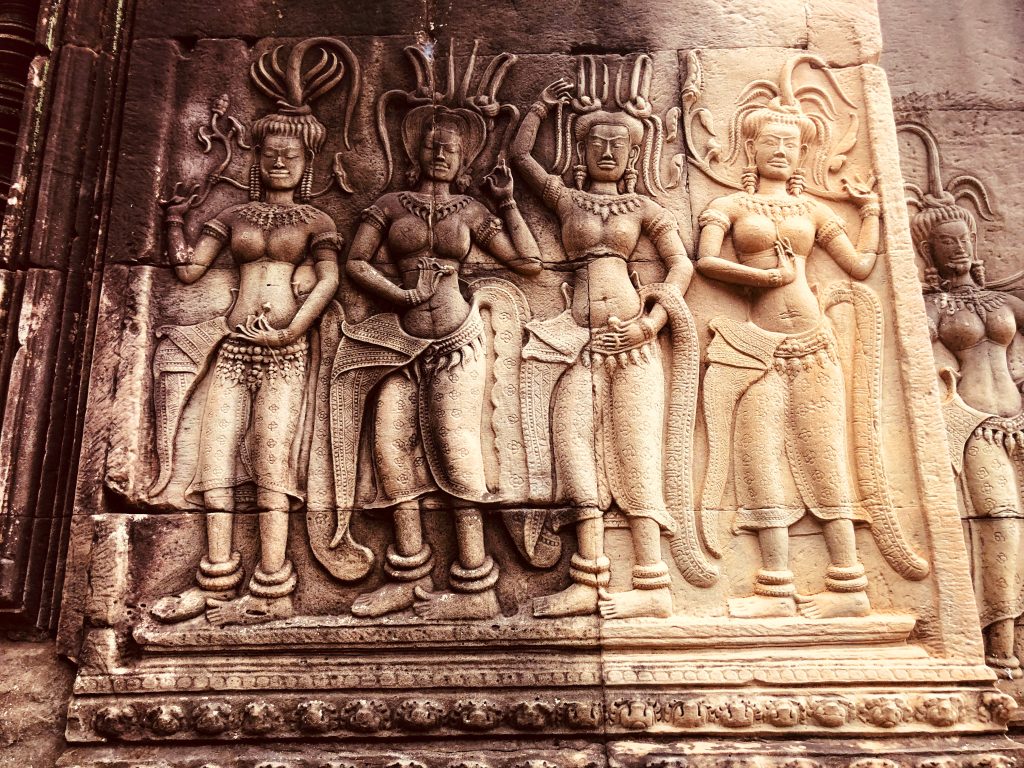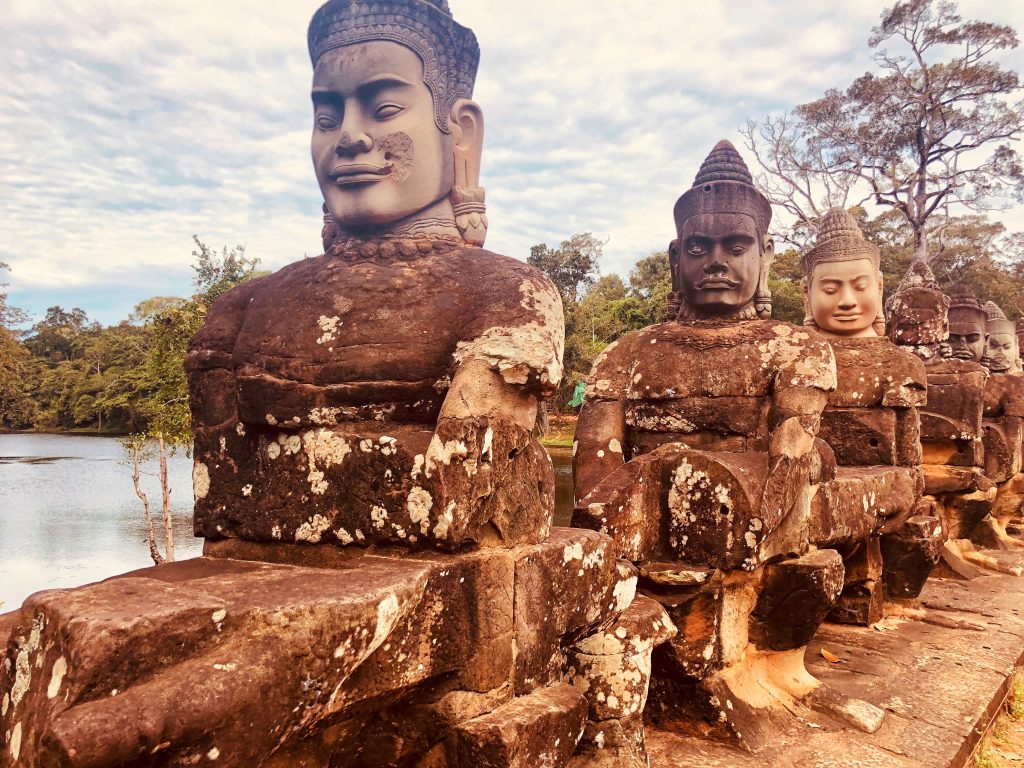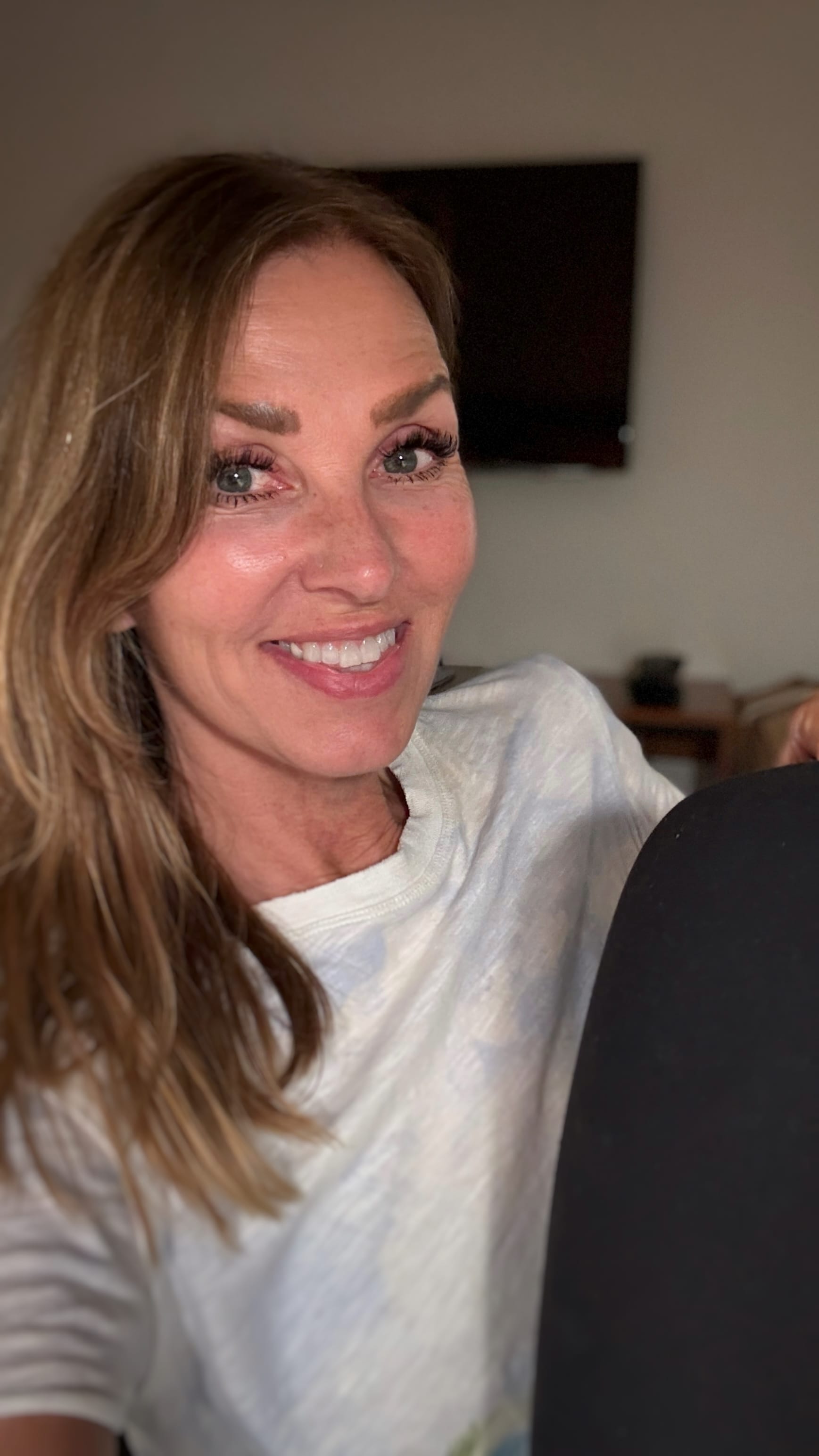Cambodia, located in Southeast Asia, is a country with a rich cultural heritage. Known for its ancient temples like Angkor Wat and its history as the heart of the Khmer Empire, it has also endured deep hardship—including the brutal Khmer Rouge era in the 1970s.
I spent seven days in Thailand before crossing into Cambodia, the second stop on a three-country trip that would end in Vietnam. My first stop: Siem Reap, home to the legendary Angkor Wat.

Siem Reap is Cambodia’s second-largest city, but it doesn’t feel like a big city when you arrive. It’s best known as the jumping-off point for visiting Angkor Wat, but it has its own rhythm—lively, dusty, a little chaotic, and full of energy.
As soon as we stepped outside international arrivals, we saw our guide holding a sign with our names. He greeted us, helped us with our bags, and led us to a waiting car where the driver already had the engine running.
The drive into Siem Reap took about 45 minutes. It reminded me a bit of Thailand—motorbikes everywhere, tuk-tuks weaving through traffic, and stretches of open road with small shops and houses scattered along the way. The heat was thick, and the road felt dusty. As we got closer to town, traffic picked up, the streets got louder, and everything felt more packed in.
Then we turned off onto a quieter side street, and just like that, we were pulling into the Golden Temple Retreat. It’s still in Siem Reap, but it didn’t feel like it—suddenly everything was calm, green, and quiet, like we’d landed somewhere far from the busy roads we’d just driven through.
The hotel itself was beautiful—lush and peaceful, with excellent spa services and food that looked as good as it tasted. Still, part of me wondered if I would’ve preferred being more in the thick of things. I wasn’t there to retreat—I was there to see. But in the middle of a three-week trip, a little calm wasn’t the worst thing.

My guide arrived at my hotel before dawn—around 4 a.m.—so we could reach Angkor Wat by 5 a.m. for sunrise. I expected a crowd but wasn’t prepared for just how many people were already there—easily a thousand or more. Even so, watching the sky turn shades of pink and orange behind the temple’s silhouette was incredible. It was one of those moments that photos can’t fully capture, and for a little while, I forgot about everyone around me.

After sunrise, we explored Angkor Wat—the centerpiece of the Angkor Wat Archaeological Park (a UNESCO World Heritage Site since 1992). The park is home to dozens of temples from the Khmer Empire— believed to date from the 12th century. The place was mind-blowing. To clarify, when I mention the Khmer Empire here, I’m referring to the ancient civilization that flourished between the 9th and 15th centuries. The Khmer Empire is known for architectural marvels—not the modern history associated with the Khmer Rouge and the Cambodian Genocide.

Though Angkor Wat started as a Hindu temple and was dedicated to Vishnu, it was later converted into a Buddhist temple. This temple alone took almost 30 years to complete. Angkor Wat’s towers are supposed to represent Mount Meru (home of the gods in Hindu and Buddhist traditions).
Carvings were everywhere you looked—walls, doorways, arches—and the detail was incredible. Inside, the bas-reliefs stretched along the walls, telling stories of epic battles, mythical creatures, and celestial beings. Calling it “craftsmanship” doesn’t even feel right—it was pure artistry. Outside, a few macaques darted around, clearly making the ruins their playground.
After finishing at Angkor Wat, we hopped on bikes and rode around more of the Angkor Archaeological Park. Taking the forest trails and passing scattered ruins gave me a much better sense of the area’s scale and history.
The ride led to Angkor Thom— much more than just a temple. It was a fortified walled city and the center of the Khmer Empire at its height. At one time, more than a million people lived there.


Inside Angkor Thom, the scale of everything stood out—crumbling walls, towering trees growing through the stone, and paths that seemed to go on forever. At the center is Bayon, which has over 200 stone faces carved into its towers. Each one has a calm, almost-knowing look. The walls are covered with carvings showing scenes from daily Khmer life, like markets and battles.
Next, we went to Ta Prohm, a temple outside of Angkor Thom’s city walls. Giant trees grow through the ruins here, their roots wrapping around the walls. The way the temple and trees have merged was both eerie and beautiful.

By the end of the day, I was exhausted but amazed by everything I’d seen.
Today, we headed to the National Park of Phnom Kulen—home to one of the most sacred mountains in Cambodia. The park is about an hour and a half from Siem Reap and is filled with temples, shrines, waterfalls, and ancient ruins. The trip took us through Cambodia’s countryside, passing by small villages where we caught glimpses of daily life: farmers working in the fields, children laughing and playing, and locals fishing in streams.


At one point, we stopped at a roadside stand where a monk was standing behind a table with several brass bowls —begging bowls. These bowls are used to collect alms, like food or small donations, as part of the monks’ daily practice. It’s their way of relying on the community while giving people a chance to practice generosity.

Kulen Park is huge, with forests, waterfalls, and a number of archaeological sites. One of our first stops was the Sangker River, where ancient linga stones are carved into the riverbed. Our guide explained that they’re a Hindu symbol for Shiva, meant to bless the water and the land. As the water flows over the carvings, it’s believed to carry divine energy that purifies everything around it. These rituals were meant to bring prosperity to the Khmer Empire and help the land and its people thrive.

From the river, we made our way to Preah Ang Thom — a massive reclining Buddha. To reach it, we climbed a long set of stairs winding up the mountain, passing smaller temples, shrines, and statues along the way.
The Buddha was stunning—and carved from a single stone. It was over 8 meters long, with intricately carved Buddha heads along its base and hundreds of small brass Buddha statues lining its length. Flowers, incense, and other offerings surrounded it. The structure covering the Buddha looked like a covered bridge, likely built to protect it from the elements. The scale and detail were nearly impossible to capture in a photo —still, seeing it up close was incredible. Even from below, the temple built into the mountain was equally impressive.

From there, we made our way toward Kulen Waterfall, following a path that took us through several small villages.

Eventually, we reached a large picnic area filled with activity. The path was lined with food vendors grilling frogs and fish, frying spring rolls, and making nom kong—deep-fried rice cakes shaped like doughnuts. The smoky smells filled the air.
Phnom Kulen Waterfall, often called the “Big Waterfall,” has two falls: a smaller one for swimming and relaxing, and a larger two-tiered cascade. A short trail led us to the base of the Big Waterfall, where the second tier drops 15 to 20 meters into a pool. The area was lively, packed with locals swimming and celebrating Independence Day.

After leaving Kulen Park, we headed to Banteay Srei, also known as the ‘Citadel of Women’ or the ‘Pink Lady Temple’ for its delicate carvings. Built in the 10th century, it’s one of the oldest temples in the Angkor area and was only rediscovered in the early 20th century, with restoration taking place a bit later.

The carvings were pretty insane. Every surface—walls, doorways, and facades—was covered in intricate floral patterns and scenes from Hindu mythology. The amount of detail was almost overwhelming—you could spend hours looking and still miss things.

It was a day packed with so much that my brain felt overloaded. Tired from the early start, I headed back to the hotel to wrap up my wonderful day with a massage—something I ended up doing often on this three-week trip. The massages were totally affordable and some of the best treatments I’ve ever had. Most evenings ended with a cocktail by the pool—not bad at all.
Once we settled in, we headed to the Phnom Penh market—always a highlight when traveling, especially in a place so different from what I’m used to. Markets like this are such a sensory experience. The mix of sights, sounds, and smells is overwhelming in the best way. I saw so many familiar things, like piles of fresh fruit, vegetables, and spices, but then there were the unfamiliar things that caught my eye—dried fish, stacks of lotus flowers, and ingredients I couldn’t even name.
Today, I took a short flight from Siem Reap to Phnom Penh—Cambodia’s capital since 1866.
Located where the Mekong and Tonle Sap Rivers meet, Phnom Penh is the political and cultural heart of Cambodia. It’s a city where the country’s modern life intersects with its past—both beautiful and tragic. Nearby sites like the Tuol Sleng Genocide Museum and the Killing Fields tell the painful story of the Khmer Rouge era, while the Royal Palace and Silver Pagoda showcase Cambodia’s rich royal heritage.
For the rest of the day, we just wandered around on our own—sometimes walking and, other times, grabbing a tuk-tuk.
Today, we headed to the Royal Palace. It started being built back in 1866 during King Norodom’s reign and has been the home of Cambodia’s kings and royal family ever since. It also happens to be one of the country’s most famous landmarks.

The Royal Palace complex is incredible, with golden pagoda-style roofs and pointed spires—prangs—that symbolize the link between heaven and earth. I know I’ve used the word “incredible” a lot to describe the temples and statues I’ve seen in Cambodia, but I honestly can’t think of a better one because they truly are incredible. The buildings combine wood carvings, gold accents, ceramic tiles, and yellow and white paint, all tied to the monarchy and Buddhism.

After grabbing lunch, we headed to the Tuol Sleng Genocide Museum—a real shift in tone from the morning. The Phnom Penh Memorial Stupa, filled with the skulls of genocide victims stacked in a glass case from floor to ceiling—5,000 of them—hits you hard.

You can’t help but feel the weight of the horror that happened here. The Khmer Rouge (1975-1979) regime killed 1.7 million people—about a quarter of the population. It’s hard to even wrap your head around something like that. So many people still living here are connected to the horrors that took place.
Our guide had endured unimaginable loss during that time. As we walked through the grounds, he shared his story—how he lost his entire family at the hands of this horrible regime. Hearing his words while standing in a place where such tragic events had unfolded made it even harder to take in.
One of the saddest things I saw was a sign next to the Magic Tree. Executioners used to hang a loudspeaker from its branches to drown out the cries of those being killed. The name was meant to be ironic—that was the point. It was sickening to think about how deliberate and cruel their actions were.
Nearby was a tree now referred to as the Killing Tree, where children were brutally beaten during executions. The trunk is covered with colorful bracelets, left by visitors to honor the children who lost their lives there. I could say more, but I think you understand the weight of it.
Unlike many landmarks in the area that are usually busy with visitors, the Genocide Museum was nearly empty. The stillness seemed to deepen the sense of sorrow, and the silence underscored the weight of what had happened here.
We also visited the Tuol Sleng Prison Museum, where over 1,200 people were imprisoned, tortured, and killed. Walking through the former classrooms turned prison cells, it was impossible not to feel the horror that once filled those walls. Photographs of the victims—men, women, and children—lined the walls.

One of the few survivors, Chum Mey, was actually there during our visit. He had been imprisoned here as a young man and suffered through the unimaginable, including the loss of his wife and child. He has written a book about his experience, Survivor: The Triumph of an Ordinary Man in the Khmer Rouge Genocide, which he sells at the museum. Seeing him sitting there, knowing he had witnessed so much horror in this place, takes incredible strength.
The Tuol Sleng Genocide Museum and Choeung Ek Killing Fields are a must-see when in Phnom Penh. It’s tough to visit, for sure, but it’s something that stays with you.
Today, we spent the day exploring Phnom Penh in a tuk-tuk. There was a driver who always parked outside our hotel and offered to take us around, and we finally said yes.

It turned out to be such an easy, fun way to see the city. We stopped whenever something caught our eye, visited some landmarks, and even rode through quiet villages far from the usual tourist spots. It gave us a different, calmer perspective of Phnom Penh.
And just like that, it was time to say goodbye to Cambodia and head to Vietnam.

Cambodia isn’t the kind of place you can sum up in a few words. It’s beautiful, layered, and complicated—and the people are wonderful. I’ll definitely miss the delicious food, tuk-tuks, and my daily massages. All kidding aside, Cambodia has been amazing. Even though Cambodia was part of my three-week trip, I could have easily spent the whole three weeks here. There’s just so much to see and learn. If you haven’t been yet, put it on the list!
Day 1: Arrival in Siem Reap
Flight into Siem Reap
Transfer to hotel (Golden Temple Retreat)
First impressions of the city
Day 2: Sunrise at Angkor Wat + Ancient Temples
Sunrise at Angkor Wat
Explore Angkor Wat in depth (UNESCO site, carvings, history)
Bike ride through Angkor Archaeological Park
Visit Angkor Thom (Bayon Temple, city walls, South Gate statues)
Visit Ta Prohm (famous for tree roots and jungle ruins)
Day 3: Kulen Park & Banteay Srei
Drive through Cambodian countryside and villages
Phnom Kulen National Park: sacred mountain, temples, shrines
Sangker River with linga carvings
Reclining Buddha at Preah Ang Thom
Kulen Waterfall (swimming and Independence Day celebrations)
Visit Banteay Srei (“Pink Lady Temple”)
Day 4: Flight to Phnom Penh
Short flight from Siem Reap to Phnom Penh
Explore city highlights on your own by foot and tuk-tuk
Day 5: Phnom Penh: Royal Palace & Genocide Museum
Royal Palace and Silver Pagoda
Tuol Sleng Genocide Museum & Killing Fields
Memorial sites (Magic Tree, Killing Tree)
Survivor encounter (Chum Mey, one of the last survivors)
Day 6: Tuk-Tuk Adventures & Farewell
Tuk-tuk ride through Phnom Penh neighborhoods and villages
Street markets and local life
Final day before heading to Vietnam

About the Author
Hi, I’m JoAnne—writer, wanderer, and lover of places that surprise me. I’ve traveled to 60+ countries (and counting), usually with a camera in one hand and a notebook in the other. I’m drawn to mosaics, markets, and mountains, and I write to remember what moved me. When I’m not traveling, I’m working on my blog Travels Afoot, trying new creative projects, or planning my next adventure. 📍 More about me | ✈️ Explore destinations